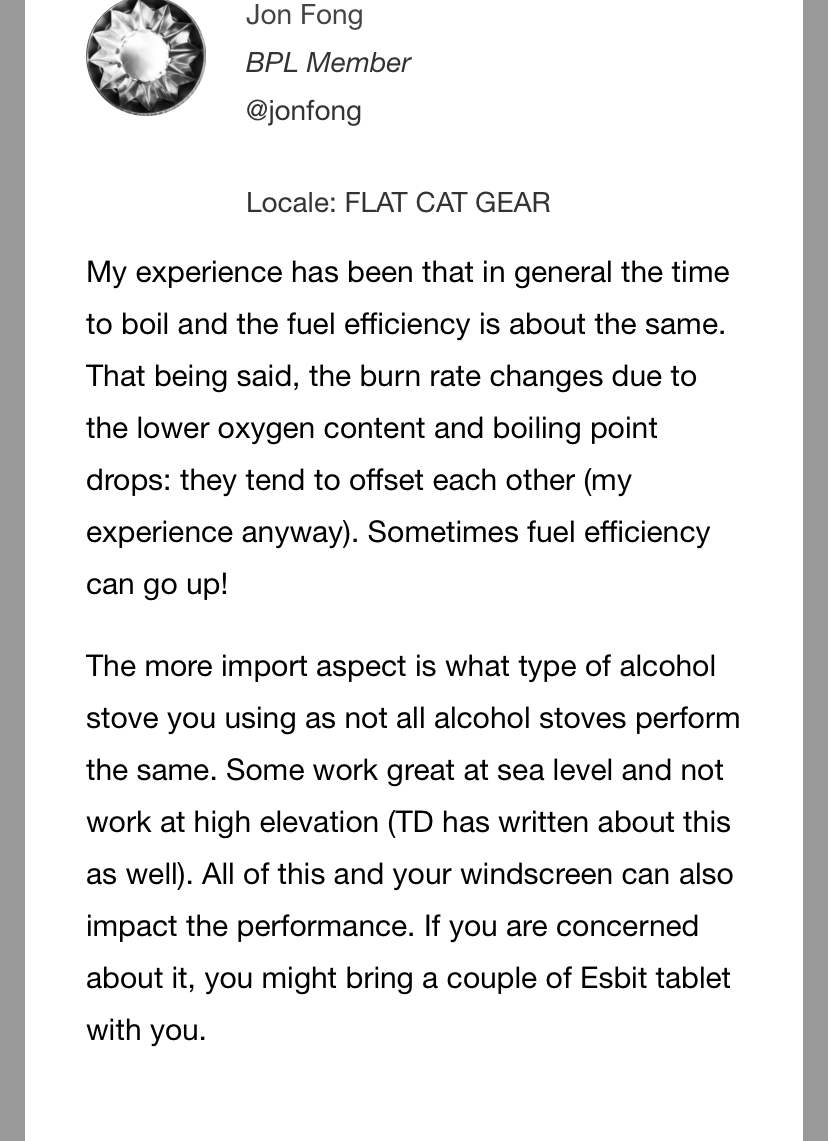Topic
Best Winter/Cold Weather Stove
Forum Posting
A Membership is required to post in the forums. Login or become a member to post in the member forums!
Home › Forums › Gear Forums › Gear (General) › Best Winter/Cold Weather Stove
- This topic has 24 replies, 15 voices, and was last updated 4 years, 6 months ago by
 dirtbag.
dirtbag.
-
AuthorPosts
-
Oct 5, 2019 at 3:10 am #3612692
Looking for an ultralight stove that works well in cold weather (down to single digits at least). All suggestions welcome!
Oct 5, 2019 at 4:10 am #3612696I hope this link actually works:
https://backpackinglight.com/forums/topic/moulder-strip-directions/
If not, do a search on “Bob Moulder Heat Exchanger”. I haven’t seen a post from Bob in a while, but he perfected a beautiful concept of strapping a copper strip to a canister stove as a heat feedback loop for a common canister stove and it works brilliantly. He gave me one but it’s easiy enough to make with common materials. Highly recommended.
Oct 5, 2019 at 5:54 am #3612699Zack – you need to define the type of use you envisage, snow melting, solo, duo or large group, cooking style, fuel preference etc or you will end up far more confused than you started. Without more info “best” is meaningless.
Oct 5, 2019 at 2:33 pm #3612710In the old days it was the Optimus 8R and Svea 123 white gas stoves which cold weather backpackers preferred. Then the MSR white gas stoves took over offering advantages to the others.
Currently MSR still makes “the best” white gas winter stoves and you don’t have to look far to find something in their line up. My backpacking stove is their Simmerlite—the “lightest” white gas stove on the market. Sadly and like idiots they discontinued the Simmerlite but they have others like the Whisperlite and the XGK etc.
Oct 5, 2019 at 3:35 pm #3612711Some history, and maybe some not-so-ultralight suggestions:
In the really old days the favorite winter stove, particularly for groups, was the Optimus 111B (white gas, big tank w/pump). It was (is) a roaring powerhouse, and it weighs multiple pounds. But it can melt prodigious amounts of snow quickly, and can handle enormous pots for large groups. I still use one for kayak camping with large groups.
Alternatively, the Optimus 00 kerosene stove was the standard winter stove where white gas was hard to find, this stove was also the standard on all Himalayan expeditions I understand. You need to prime it with alcohol to get the kerosene to light. This stove doesn’t weigh that much, it might still be a decent choice for winter, if you can find one that doesn’t cost a fortune.
I recall the Svea was hard to light in really cold weather, you had to preheat everything and keep it insulated from the snow. I never used the optional Svea pump, I heard it marginally helped in cold weather. The same is true for the Optimus 8R, maybe the optional pump helped.
For years I used a Coleman single-burner stove with preheat tube and built-in pump in the winter, it worked great. Sometimes I used a fire paste to preheat the tube. Coleman still makes some version of this stove, a dual-fuel model if I recall.
Oct 5, 2019 at 4:43 pm #3612716I recall the Svea was hard to light in really cold weather
The Svea 123 is/was about the easiest to use cold-weather stove I’ve ever used. I’ve used mine well below zero, day after day with zero problems. You just can’t be bashful priming it. The Svea “pump” was a waste of time.
I had an MSR XGK in the 1980’s, it was a real blow torch.
The MSR Simmerlite was awesome, and I foolishly sold mine.
I still have an MSR Whisperlite International… it’s a solid choice.
Oct 5, 2019 at 5:29 pm #3612727Don’t forget the remote canister stoves where the canister is designed to be inverted. Caffin has a couple good articles.
Oct 5, 2019 at 5:32 pm #3612728Most foolproof is a white gas stove because it works in any temperature.
My choice is the Whisperlite Universal “hybrid” or dual fuel stove that uses white gas or an inverted canister.
Oct 5, 2019 at 6:34 pm #3612733When I found out they were going to discontinue the Simmerlite I bought 2 more for a total of 3 and while excellent it has one irksome flaw—it’s nearly impossible when cleaning the fuel wire cable to get the blasted thing reinserted again.
This problem was discovered by me of course and by a guy here on BPL—read his quote—
I once saw a problem with the cleaning wire in the fuel tube. The wire is made from twisted wire cable commonly referred to as aircraft cable. I have never heard of or seen this problem except in a SimmerLite I saw this summer.
After the cable had been removed as part of the cleaning procedure, it could not be pushed back in. The cable had lost some of the temper that maintained the wire twist and when pushing it into the fuel tube, the friction from pushing the wire around the bends caused the wire to untwist slightly and expand, increasing the friction until it could not be pushed any further.
If this happens in the field, the stove will still work without this wire inserted or with the excess wire you could not push in cut off with wire cutters, if you carry them. Make sure you leave some wire extending out so you can remove the cut wire when you get a replacement. To use it this way, pump less pressure into the fuel bottle than you ordinarily would. Removing the wire reduces the restriction to fuel flow and MSR recommends less pressure in the fuel tank to compensate. (MSR will replace any defective part for free and even mail it to the post office of your choice. Just call them when you get to a phone.)
This blurb is from
https://backpackinglight.com/msr_white_gas_stove_maintenance_advice/
I pulled a long trip last winter and like an idiot I didn’t take the time at home to clean the fuel cable so the stove clogged up in the field and took forever to boil up water. In the tent vestibule I pulled out the cable—easy enough—cleaned it thoroughly—but dangit I never could get it all the way back into the stove as it had 2 inches sticking out where the cable connects to the stove pump.
So I used my hiking pruners and cut the cable off and fired up the stove—well away from the tent of course. It worked! I kept using the mangled stove for the next 10 days of the trip.
Oct 5, 2019 at 7:45 pm #3612741Use any of the many good upright canister stoves, put the butane canister in a small bowl of water. As you’re using the stove, pour a small amount of the water you heated and put it into the bowl.
Oct 5, 2019 at 8:29 pm #3612749Thanks for all the great responses. I typically use a Pocket Rocket or a Soto Amicus during regular weather. I typically cook with a fire during the winter and I have used a borrowed Whsiperlite in the past. I have never used a kit stove like a Jetboil or a Windburner. Will stoves like that perform any better in cold weather than Pocket Rocket type stoves? Also Mark this would be for an ultralight solution for 1 to 2 people for boiling water and melting snow mostly.
Oct 5, 2019 at 8:38 pm #3612752jetboil and windburner would operate the same as other upright canister stoves – good down to 32 F, maybe 22 F with good butane like MSR Isopro
Oct 5, 2019 at 10:02 pm #3612764Ah yes, the MSR XGK, I forgot about that one. Also a great winter stove, mine never simmered too well but that wasn’t what it was made for. Worked great.
The only problem I ever had, and it was a dangerous one, was a nick in the o-ring sealing the metal fuel tube where it entered the stove burner. I did all the pre-lighting checks, no leaks. But when I lit the stove fuel leaked past the o-ring. Quite fortunately the stove was on a slight incline so the fuel ran away from the burner and I saw it before it ignited. Had it gone the other way towards the burner and ignited there would have been an inferno, possibly deadly when the flames got to the full fuel bottle, as it likely would have generated an enormous fireball.
Lesson…carefully maintain all liquid fuel stoves, check and recheck before use!
Oct 7, 2019 at 3:24 pm #3612948I’ve been using the MSR Reactor in the winter (assume context: melt snow for water and temps below freezing) and it’s been a long time now since I’ve used a white gas stove.
It’s faster, simpler, lighter, cleaner, and safer.
Dealing with canister temp drop is easy enough using a moulder strip, bowl of water, etc.
Cooking in a snow pit (to create a waste heat feedback loop) doesn’t really work with it though because there is virtually no waste heat from it, like there is with other stoves.
For me, simple and fast are my main priorities in winter and the Reactor fits that bill perfectly.
Oct 7, 2019 at 8:38 pm #3612984Best quiet, winter alcohol stove is the Mega Starlyte paired up with a wood stove as the pot support:


 Oct 7, 2019 at 10:43 pm #3612988
Oct 7, 2019 at 10:43 pm #3612988I’ve used my trail designs 600 ml Sidewinder Ti-Tri in winter conditions here in NY to boil water for my dinner. I used the kojin alcohol stove with it, no problems at all. It also has the options to use esbit or wood burning (if you get the inferno with it). I like it because it gives me 3 options for fuel and is light weight and it all nestles into the 600ml pot, small and compact.
I recently picked up a 1 liter MSR Reactor and a 1 liter MSR windburner kit to play with this coming winter. They are bigger and bulkier and heavier, but faster to boil water or melt snow. Definitely not ultra light at all.
Oct 7, 2019 at 11:50 pm #3612991Oct 7, 2019 at 11:54 pm #3612994Meh’ sorry. Was trying to link to an older post of mine regarding alcohol stoves and winter temps..
But im not tech savy and , lmao, somehow i just linked to that.. No idea what i did.Oct 8, 2019 at 10:39 am #3613031<p style=”padding-left: 40px;”>Anyone else use Esbit in winter? I double up for snow melting or make tiny stick fire, single tab for coffee/oatmeal.</p>
Not best for speed- that’s ok, I’m not in a big rush.best for simplicity and safety- I’m a fan.
Oct 8, 2019 at 3:25 pm #3613052Depending where you are.. Small fire. Hence why i like my 600 ml ti-tri.
Oct 8, 2019 at 5:40 pm #3613065I disagree that alcohol (and Esbit by extension) is a solid winter snow-melting stove. A couple of years ago when Dan was being the camp host down south, his daughter sent me a Mega Starlyte to test and report back. After testing at my home (5440′ elevation) and again in the mountains at 8300′, I found that the stove wasn’t very acceptable to me for winter snow-melting. My reasons for this:
- It took quite a bit of alcohol (~ 3 fl. oz.) to melt 2 liters of water from snow, and it took quite awhile to do so.
- The extra weight of the alcohol required made it a bit heavier than my regular canister stove setup with a Moulder Strip.
- Alcohol is quite a bit slower to melt snow, and its efficiency drops as the elevation increases and the temperature decreases.
As Jon Fong says, my 2c
Oct 8, 2019 at 5:52 pm #3613067In Shug’s video they are using a wood stove attached to a tree to melt snow with the process accelerated by a pocket bellows!
My 2 cents agree with Gary’s. I assume the winter conditions are camping on snow and needing to melt snow for water and cooking. Take a remote canister isobutane stove that you can invert the fuel for liquid feed. The MSR Reactor class of thermally efficient stoves are a big investment for one winter trip.
If you already own a white gas stove, you can use that. But in my mind the only advantage of white gas is that the fuel is cheaper and, if you are in a group where others are using white gas, you can share fuel. Isobutane stoves are easier to light, and you can make your morning coffee in the vestibule of your tent in the morning.
Oct 8, 2019 at 11:23 pm #3613099




 took a handful of twigs and roughly about 6 minutes for 2.5 cups water to boil.Oct 9, 2019 at 11:54 am #3613148
took a handful of twigs and roughly about 6 minutes for 2.5 cups water to boil.Oct 9, 2019 at 11:54 am #3613148Hi Gary- I agree esbit is not efficient for bulk snow melting :) If I need to melt 1/2 liter, for coffee or one meal, I use 2 esbit, cracked in half. If melting needs exceed 1 liter I make small wood fire to accomplish that. In winter I use two windscreens, one around base of pot and stove, and one taller one that encompasses the sides of cook pot to trap some heat loss next to the pot. The Ti Tri makes my setup look pretty ghetto… Alcohol burns even lower temp so I’m sure melting 2 L was a painfully slow process! I like the simplicity, consistency, safety and quietness of esbit.
i don’t use alcohol but I’m not sure if alcohol and esbit are synonymous in their loss of functionality at elevation and cold temps. Maybe Jon Fong will chime in as I’m no expert. Esbit works fine in cold (below zero) for me and all accounts I’ve read say esbit is unaffected by elevation (I’ve only used esbit for about 4 years here in Maine, everything’s less than 5,000’ except Mt Katahdin) In the past when snow camping in Colorado we always used upright canisters and kept them warm(I do miss the 14ers!)


 in response to question Of alcohol stove at elevation , not snow melting but regular cooking
in response to question Of alcohol stove at elevation , not snow melting but regular cooking Oct 9, 2019 at 12:39 pm #3613152
Oct 9, 2019 at 12:39 pm #3613152That set up there weighs just over 8 ounces with 6 quick tinder tabs, 4 storm proof matches, a mini bic lighter, an MSR collapsible spoon and MSR collapsible fork.. And yes, it all fits inside that 600ml pot, with a cuben fiber stuff sack 😍 works for me !!
-
AuthorPosts
- You must be logged in to reply to this topic.
Forum Posting
A Membership is required to post in the forums. Login or become a member to post in the member forums!
Our Community Posts are Moderated
Backpacking Light community posts are moderated and here to foster helpful and positive discussions about lightweight backpacking. Please be mindful of our values and boundaries and review our Community Guidelines prior to posting.
Get the Newsletter
Gear Research & Discovery Tools
- Browse our curated Gear Shop
- See the latest Gear Deals and Sales
- Our Recommendations
- Search for Gear on Sale with the Gear Finder
- Used Gear Swap
- Member Gear Reviews and BPL Gear Review Articles
- Browse by Gear Type or Brand.




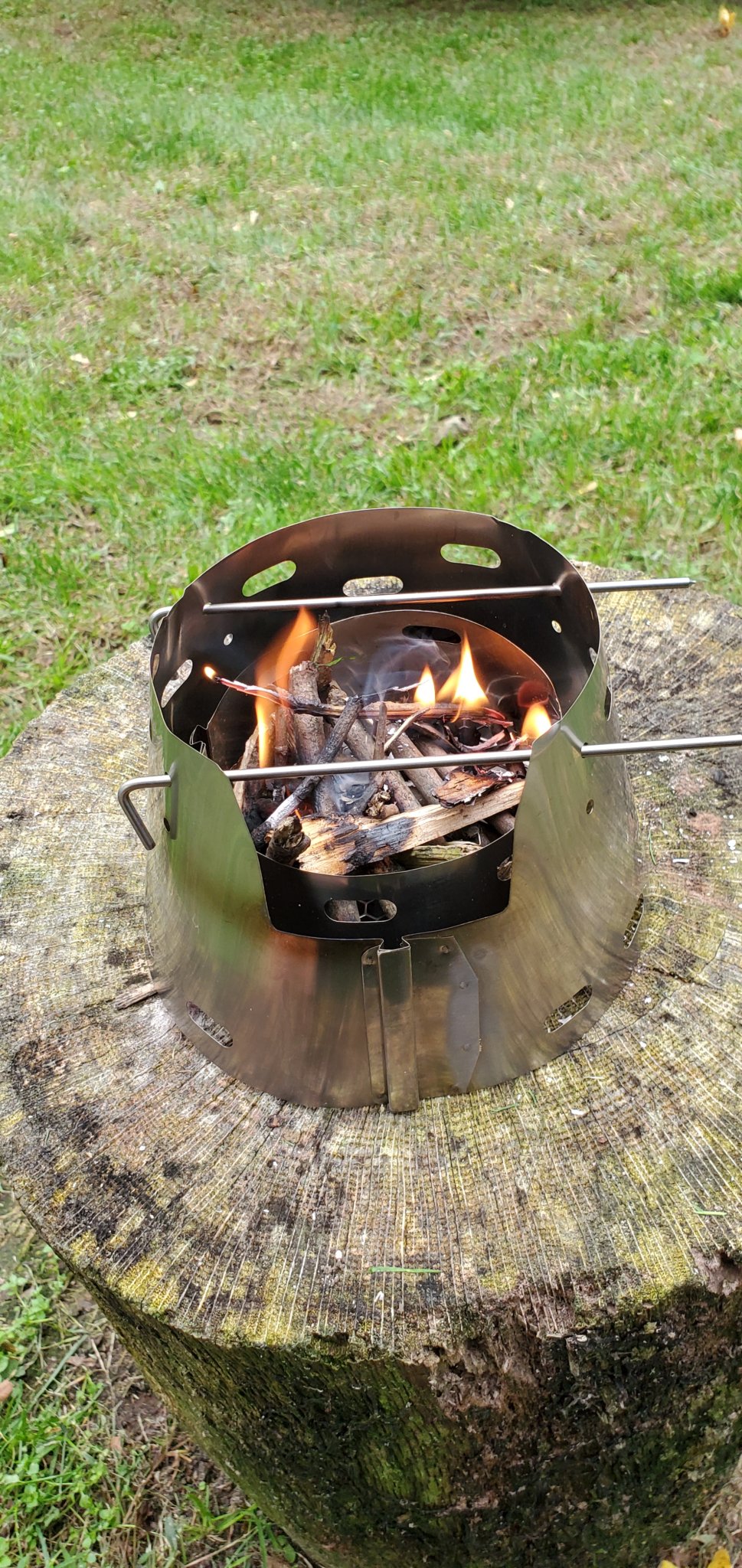
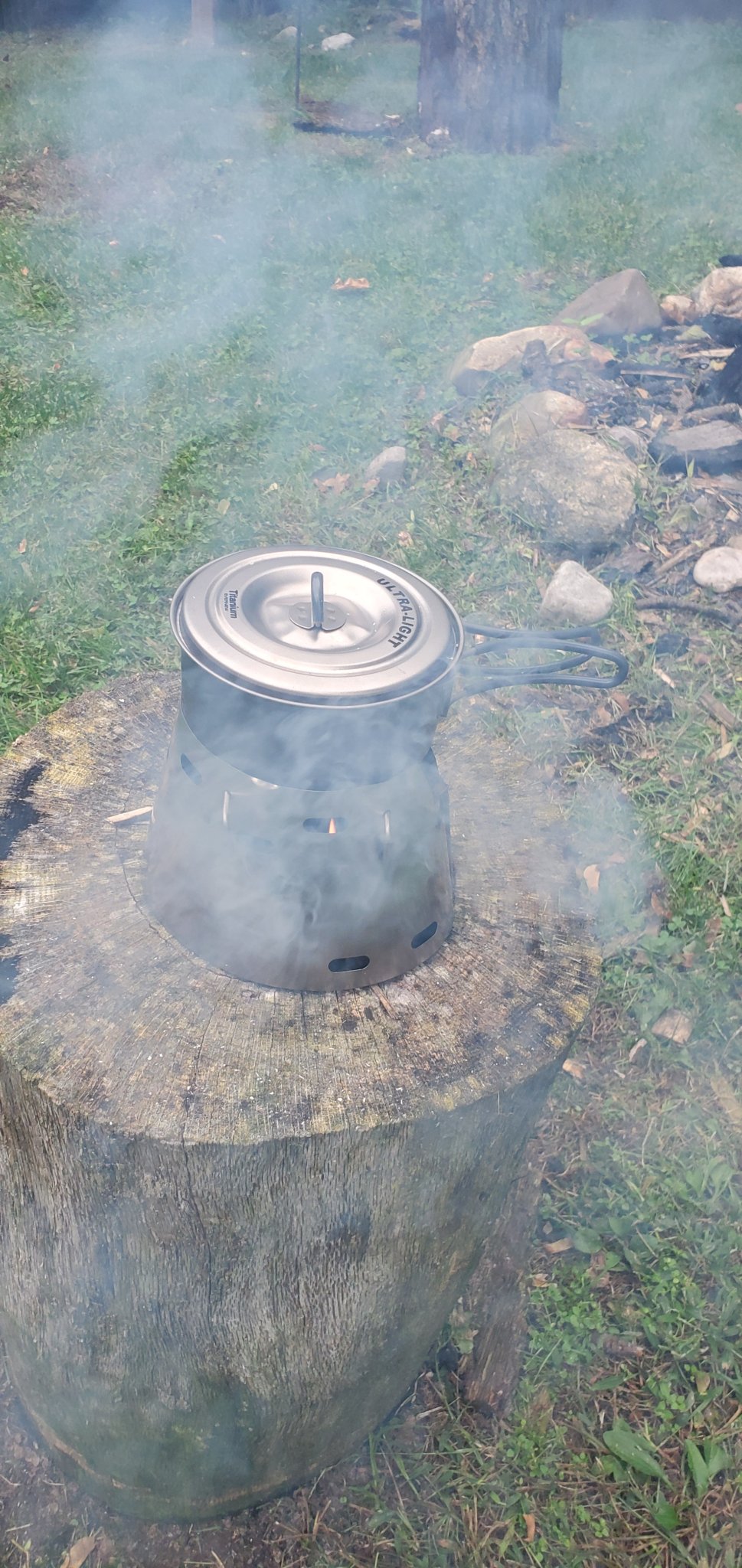

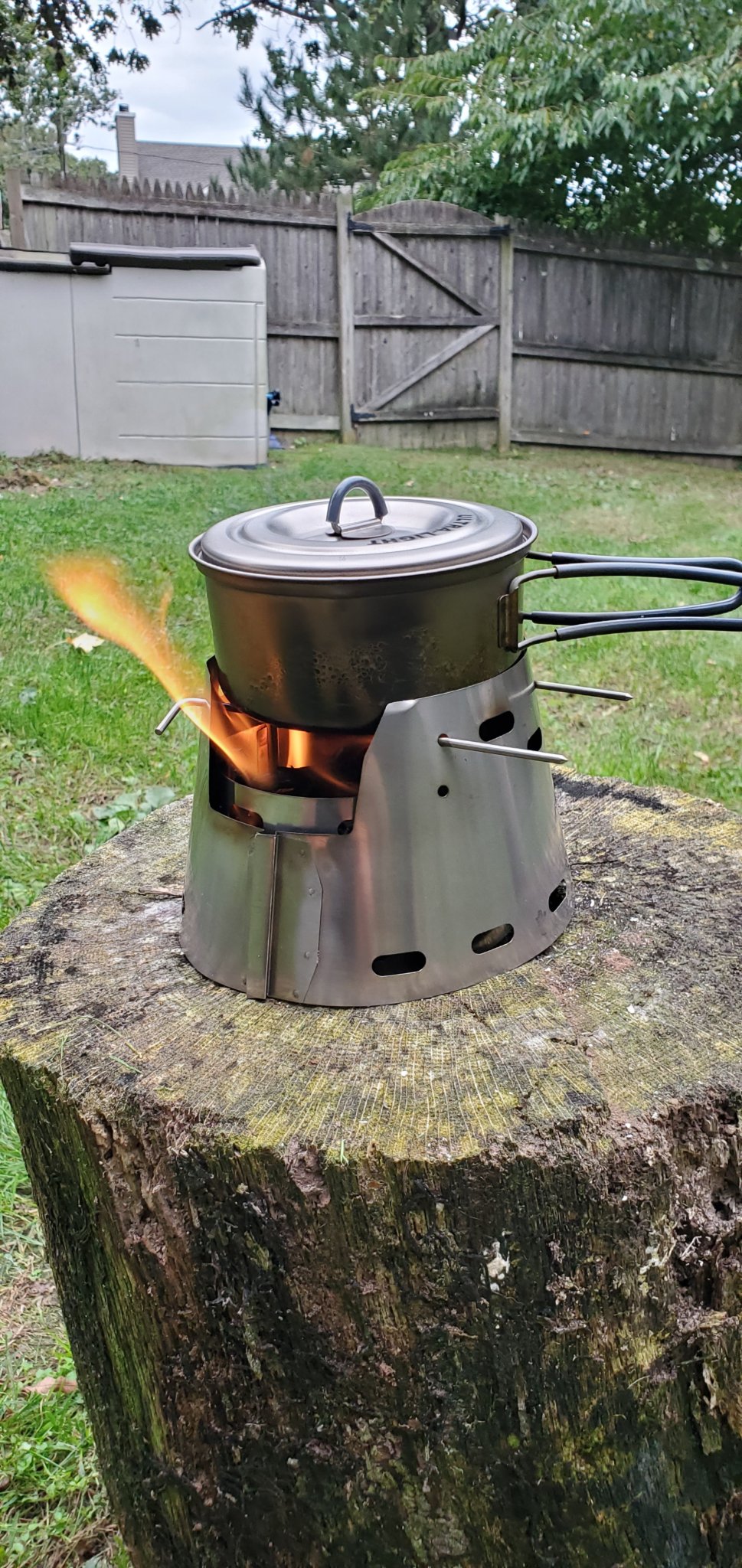
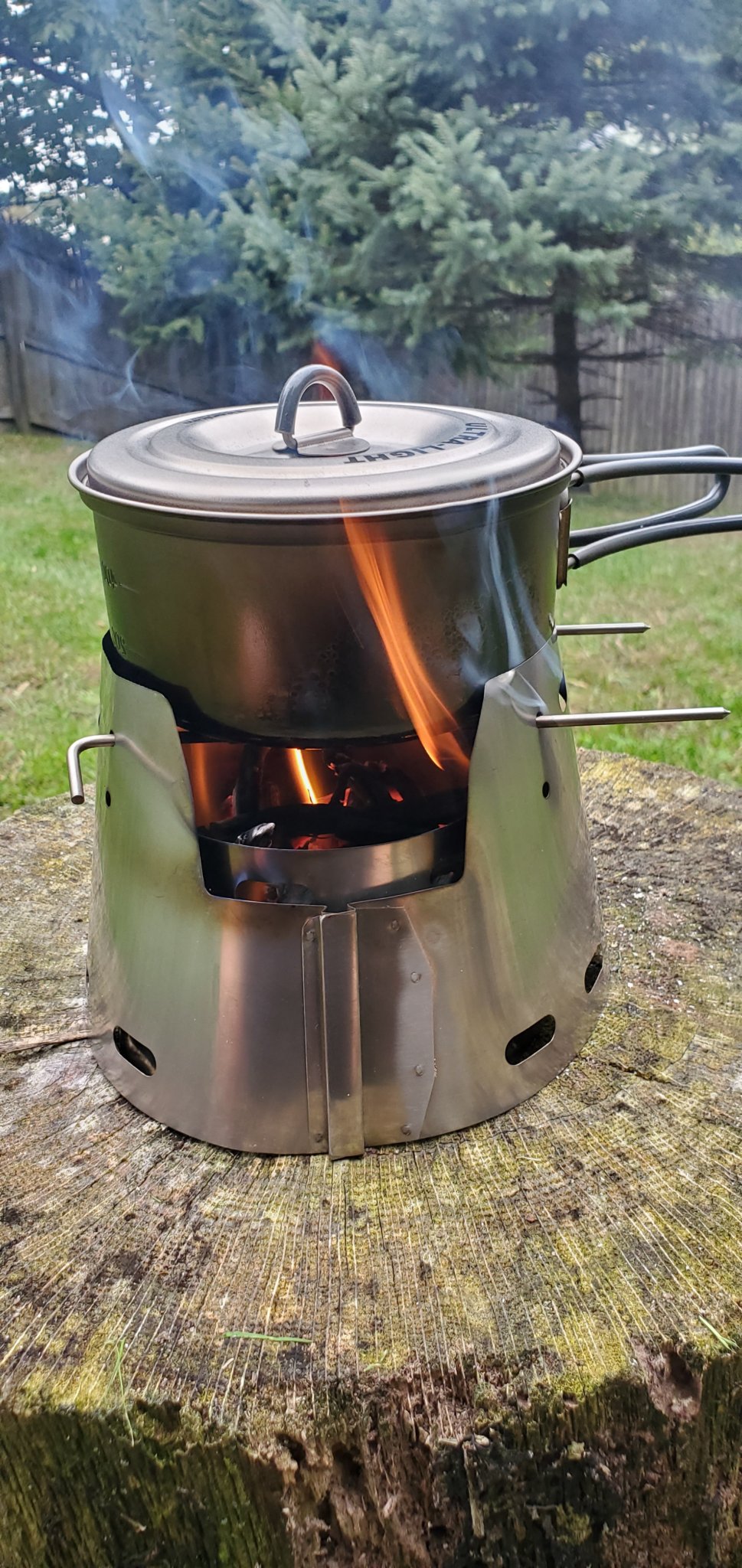
 took a handful of twigs and roughly about 6 minutes for 2.5 cups water to boil.
took a handful of twigs and roughly about 6 minutes for 2.5 cups water to boil.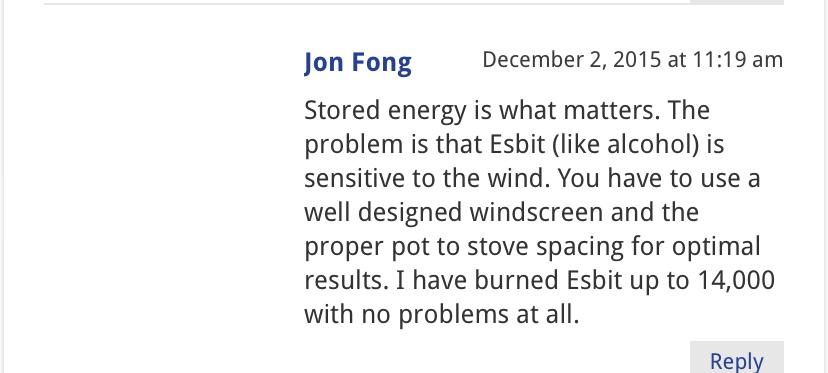
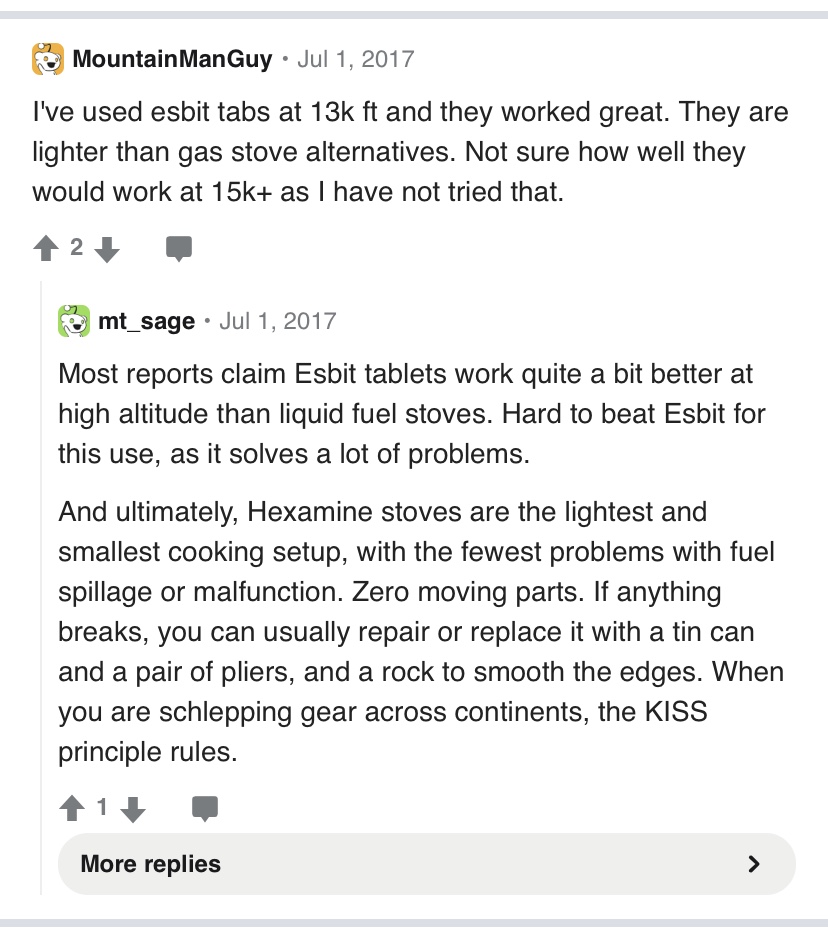
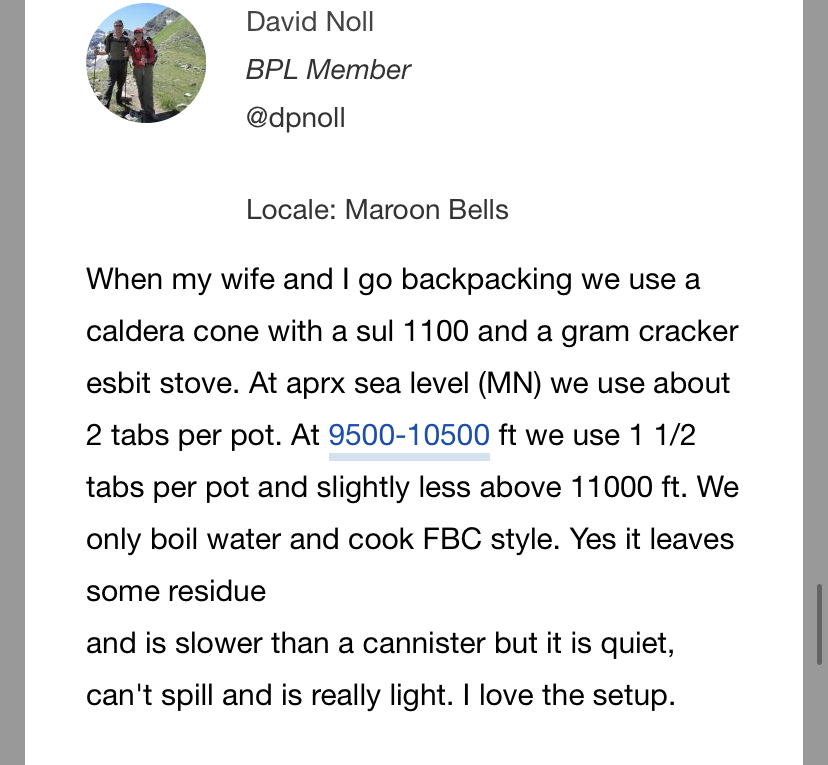 in response to question Of alcohol stove at elevation , not snow melting but regular cooking
in response to question Of alcohol stove at elevation , not snow melting but regular cooking